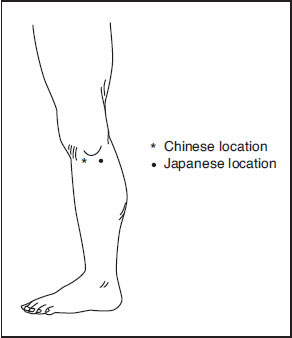Whether it be a sequel to AIDS, diabetes, cancer therapies, or alcoholism; hereditary, toxic, metabolic, infectious, inflammatory or ischemic diseases, peripheral neuropathy (or polyneuritis), is an insidious condition that causes much suffering to millions of people.
The peripheral nervous system consists of the nerves that connect the central nervous system to the muscles and internal organs, and transmit sensation throughout the body, thereby making feeling possible. The main clinical manifestations of peripheral neuropathy include pain, aching, burning, numbness, and tingling of the distal limbs, as well as itching or even extreme sensitivity to even the slightest touch. Frequently, these symptoms are bilateral, exacerbated at night, and affect the lower limbs more than the upper limbs. Typical Western treatment revolves around relieving patient discomfort.
All of the aforementioned diseases have in common a severe vacuity of yin, blood, and qi such that static blood is engendered. Since the etiology of most of this blood stagnation is qi, blood, or yin vacuity, for long-lasting results, these causative factors must likewise be addressed along with the treatment strategy to invigorate the blood. Regardless of whether one is using acupuncture or an herbal prescription the correct treatment entails addressing the etiological factors. From an acupuncture perspective there are certain unique therapies that can benefit this condition, particularly those treating blood stasis. Acupuncture points with known clinical efficacy can then be added to the core treatment to address underlying deficiencies.
Traditional acupuncture treatment approaches have concentrated on the use of local points, luo and shu (stream) points of the affected channels to treat peripheral neuropathy. In my treatment of peripheral neuropathy of the lower limbs I use five core points—KI-1 (yong quan), LR-4 (zhong feng), SP-6 (san yin jiao), GB-34 (yang ling quan), and KI-6 (zhao hai). For the upper extremities I rely on PC-6 (nei guan), LU-9 (tai yuan), LI-11 (qu chi), ST-12 (que pen) and CV-17 (shan zhong).
To determine their applicability in treatment, palpate each point, one at a time, for any noticeable tenderness that the patient may report to you. Press the point in a rubbing motion for about 3 seconds to the depth that you would actually needle. If the point is tender it can be needled in treatment. The energetics of these points as well as their corresponding needling techniques and locations, some of which are Japanese locations, are summarized in Table 1.1 and illustrated in Figures 11.1 and Figures 11.2.
| Point | Energetics | Needle Technique |
| Lower limb | ||
| KI-1 (yong quan) | Promotes blood circulation. Invigorates qi; regulates flow of qi. Clears heat. Activates collaterals. Promotes production of body fluid | Puncture perpendicularly 0.3–0.5 in with a #1 gauge needle. Patients should be taught to press the point on a daily basis for several minutes. Continue daily until there is no more tenderness |
| LR-4 (zhong feng) | As the metal point on a wood meridian, it moves qi and blood, because metal controls wood via the five element control (ko) cycle. Primary point for blood stagnation in the lower burner analogous to PC-6 (nei guan) in the upper burner | Puncture perpendicularly 0.3–0.5 in or obliquely upward in the direction of the liver channel. Can be rubbed firmly by patient for self-treatment |
| SP-6 (san yin jiao) | As group luo of the three-leg yin it nourishes the yin of the liver, spleen, and kidney. Improves circulation in the lower burner. For poor venous circulation | Puncture perpendicularly 0.5–1.0 in |
| KI-6 (zhao hai) | Nourishes the yin, cools the blood. Reduces inflammation. Supports the sympathetic nervous system | Puncture transversely 0.1 in towards the heel with a #1 gauge needle. Do not obtain qi |
| GB-34 (yang ling quan) | As the influential point that dominates the tendons, it is a primary point for tendons, muscles, ligaments, and nerves | Puncture perpendicularly 0.8–1.2 in. Have the patient rub with strong pressure |
| Upper limb | ||
| PC-6 (nei guan) | Removes stagnation anywhere in the body. Can drain off excess stuck energy of upper burner. Produces yin and blood | Puncture perpendicularly 0.5–1.0 in or apply deep dispersive pressure by hand, especially on the left side |
| LI-11 (qu chi) | As a powerful blood tonic, builds blood, clears heat and fire. Benefits the sinews. Boosts qi | Puncture perpendicularly 0.5–1.0 in |
| ST-12 (que pen) | Loosens tissues and muscles of the supraclavicular fossa to promote qi and blood flow through this critical nexus over the brachial plexus, which supplies the blood and nerves of the upper extremities, neck and face | Puncture perpendicularly 0.3–0.5 in, avoid the transverse cervical artery. Needle with caution as this point is on the apex of the lung. Alternative technique is with patient lying on their side to puncture perpendicularly toward the spine |
| LU-9 (tai yuan) | As the shu (stream) and yuan (source) point—useful for distal extremities and chronic conditions. As the influential point that dominates the vessels (union of veins and arteries), improves circulation by benefiting arteries | Puncture perpendicularly 0.2–0.3 in |
| CV-17 (tan zhong) | Opens the chest, adjusts qi, spreads the qi. One of the eight influential points that dominates the qi | Puncture transversely upward (toward the head in the direction of the channel) 0.3–0.5 in. Retain needles 10–15minutes |
| Contraindications/instructions | Do not use any of these points in pregnancy due to their strong ability to move the blood, or with patients who have a history of deep vein thrombosis of the lower limbs | |
Table 11.1 Primary treatment points for peripheral neuropathy of the lower and upper limbs*

Stay updated, free articles. Join our Telegram channel

Full access? Get Clinical Tree






